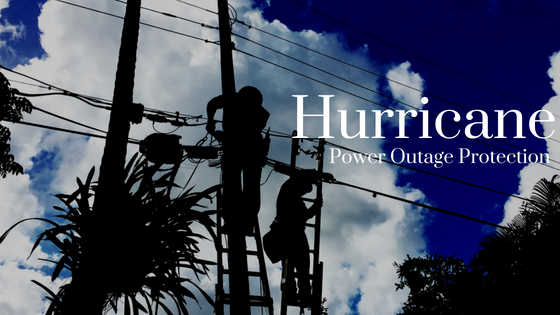
A Guide to Hurricane Power Outage Protection in Florida
Hurricane power outage protection is critical during the most intense hurricanes in different regions of the country.
How Hurricanes are Formed
Hurricanes are formed when a low pressure system develops over warm ocean waters and the water evaporates, spinning upward into the center of the system. This upward spiral causes the surface pressures below the center of the low pressure system to drop causing the water to evaporate and circulate upward at an accelerated rate. The upward spiral spins faster, increasing the winds around the center. When the winds reach 45 miles per hour, the system is considered a tropical storm, and when winds reach 74 mph, the system is officially a hurricane.
The most intense hurricane ever recorded was hurricane Wilma in 2005, which had wind speeds of 185 mph at its strongest point and made landfall on the Yucatan peninsula with winds of 150 mph. Even a minimal hurricane can cause extensive damage to buildings, knock down trees, flood roads and create massive long lasting power outages. From 1851 to 2017, 117 hurricanes hit the state of Florida, which means at any given year there is a 70% chance the state will get hit by a hurricane. So if you live or work in the state of Florida, hurricane preparations are a necessity, and proper planning is a must. For homeowners, the best plan is usually evacuation with enough time to get to safety well ahead of the storm. For business owners that can’t afford to be without power, such as companies in the food and beverage industry, gas stations on evacuation routes, hospitals, and homes that care for the elderly, having an effective emergency power system can saves lives and millions of dollars.
Types of Emergency Power Systems
A complete emergency power system includes a temporary power generation source, typically a diesel or gas generator, a transfer switch and power distribution equipment to distribute the power from the generator to the load. The generator should be large enough to handle at least 25% more than the loads necessary to keep critical pumps, motors and lighting running. Building owners and managers can choose between having a permanent on site generator that is pre-wired to a transfer switch and emergency power distribution board, or a generator provision with a transfer switch and temporary power distribution panel that can be quickly connected without an electrician.
Permanent Systems
Permanent emergency power systems have a pad where the generator is mounted and a manual or automatic transfer switch, which is then pre-wired to an emergency power distribution board or a generator docking station. Emergency power distribution boards are typically used when the temporary power requirements are over 1200 amps, and contain distribution circuit breakers in the board that protect the cable feeding the necessary temporary power loads. For requirements that are less than 1200 amps, the transfer switch can be connected to a generator docking station that cables directly to one or more interior emergency power panels. Generator docking stations do not contain circuit breakers and are intended to distribute power but not protect circuits.
Temporary Systems
Temporary emergency power systems do not have a permanent on site generator, but rather rely on a generator service company such as Caterpillar, Cummins or Aggreko to provide a generator when needed. It is recommended that building owners and managers have a service contract in place that pays a monthly fee to ensure a generator is available when needed. The cabling for temporary emergency power systems come with the generator and use camlock or twist-lock connections that do not require an electrician to install. The transfer switch and generator docking station or emergency power distribution board should already be in place and have the same connection types as the generator, allowing for fast connection even in the middle of a storm. Power Assemblies’ generator docking stations have color coded connections to match the connections on the cable assemblies, making the process easier and safer.
If you live or work in Florida, hurricane preparations are a necessity. Thankfully, safe and effective emergency power products are readily available from ATI Electrical Supply. These products are designed work with both the permanent and temporary applications described above. If you need help designing or just want some advice, please contact us at info@atielectrical.com or call us at 1-800-597-9311 and we’ll be glad to help.

 CALL OR TEXT NOW 800-597-9311
CALL OR TEXT NOW 800-597-9311
Leave a comment